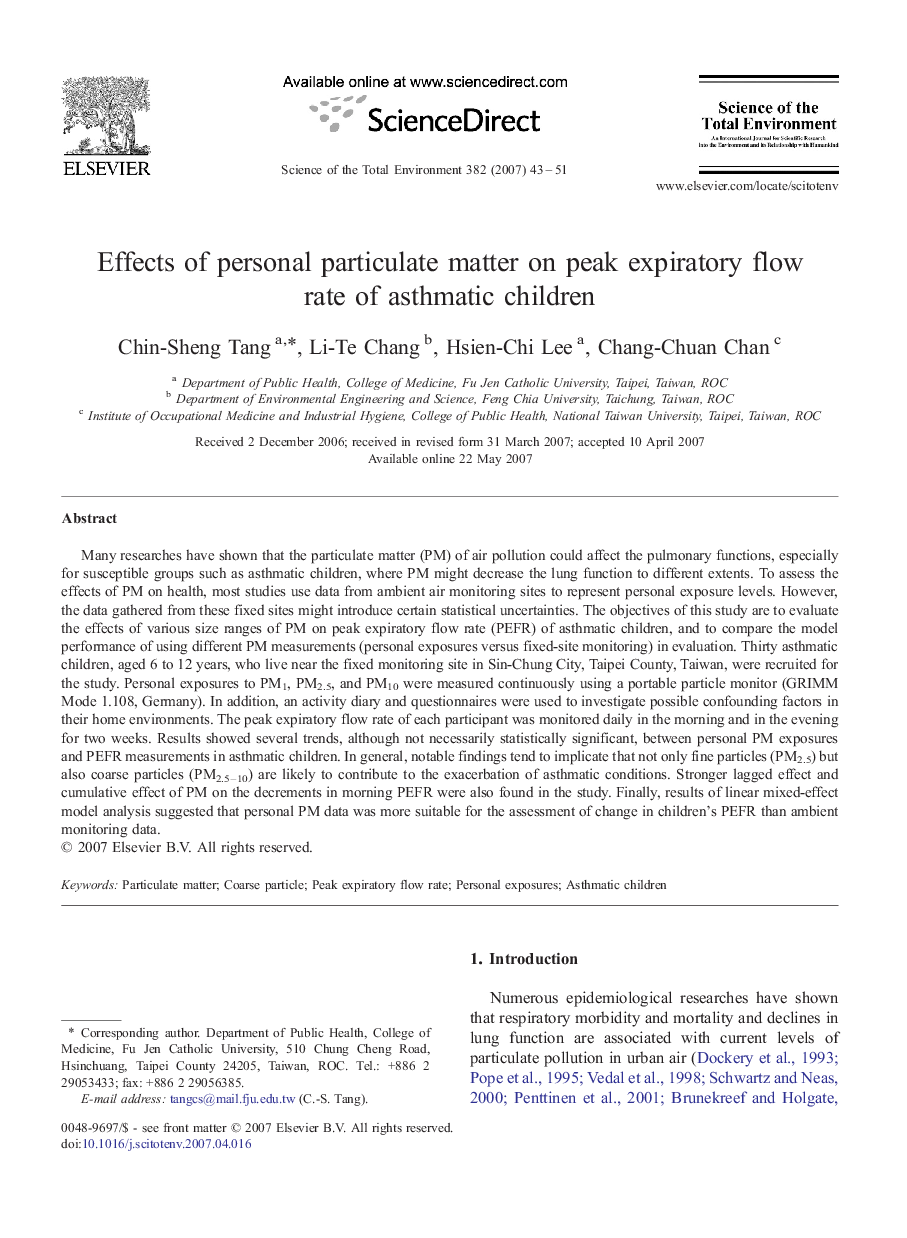| Article ID | Journal | Published Year | Pages | File Type |
|---|---|---|---|---|
| 4433042 | Science of The Total Environment | 2007 | 9 Pages |
Many researches have shown that the particulate matter (PM) of air pollution could affect the pulmonary functions, especially for susceptible groups such as asthmatic children, where PM might decrease the lung function to different extents. To assess the effects of PM on health, most studies use data from ambient air monitoring sites to represent personal exposure levels. However, the data gathered from these fixed sites might introduce certain statistical uncertainties. The objectives of this study are to evaluate the effects of various size ranges of PM on peak expiratory flow rate (PEFR) of asthmatic children, and to compare the model performance of using different PM measurements (personal exposures versus fixed-site monitoring) in evaluation. Thirty asthmatic children, aged 6 to 12 years, who live near the fixed monitoring site in Sin-Chung City, Taipei County, Taiwan, were recruited for the study. Personal exposures to PM1, PM2.5, and PM10 were measured continuously using a portable particle monitor (GRIMM Mode 1.108, Germany). In addition, an activity diary and questionnaires were used to investigate possible confounding factors in their home environments. The peak expiratory flow rate of each participant was monitored daily in the morning and in the evening for two weeks. Results showed several trends, although not necessarily statistically significant, between personal PM exposures and PEFR measurements in asthmatic children. In general, notable findings tend to implicate that not only fine particles (PM2.5) but also coarse particles (PM2.5–10) are likely to contribute to the exacerbation of asthmatic conditions. Stronger lagged effect and cumulative effect of PM on the decrements in morning PEFR were also found in the study. Finally, results of linear mixed-effect model analysis suggested that personal PM data was more suitable for the assessment of change in children's PEFR than ambient monitoring data.
